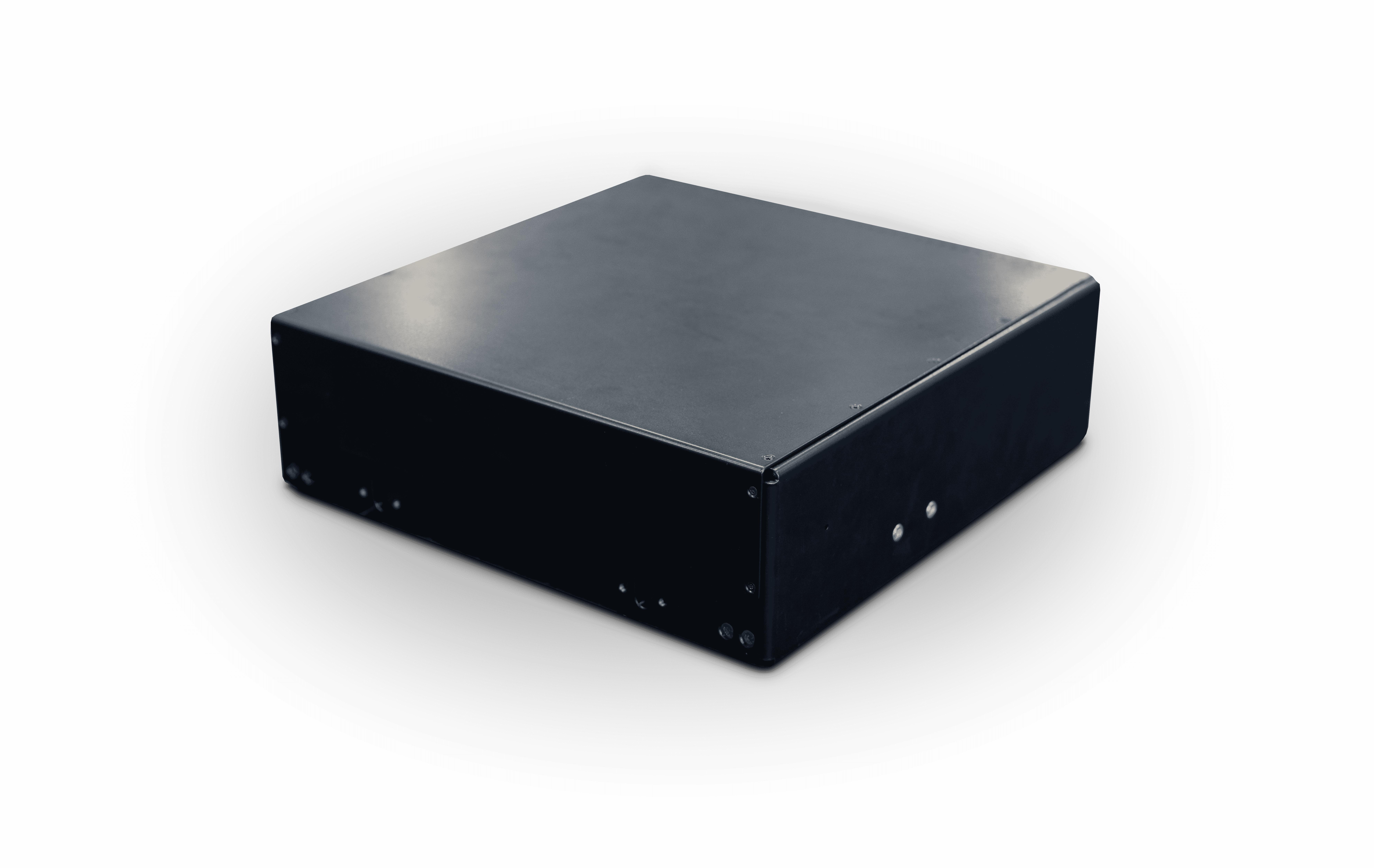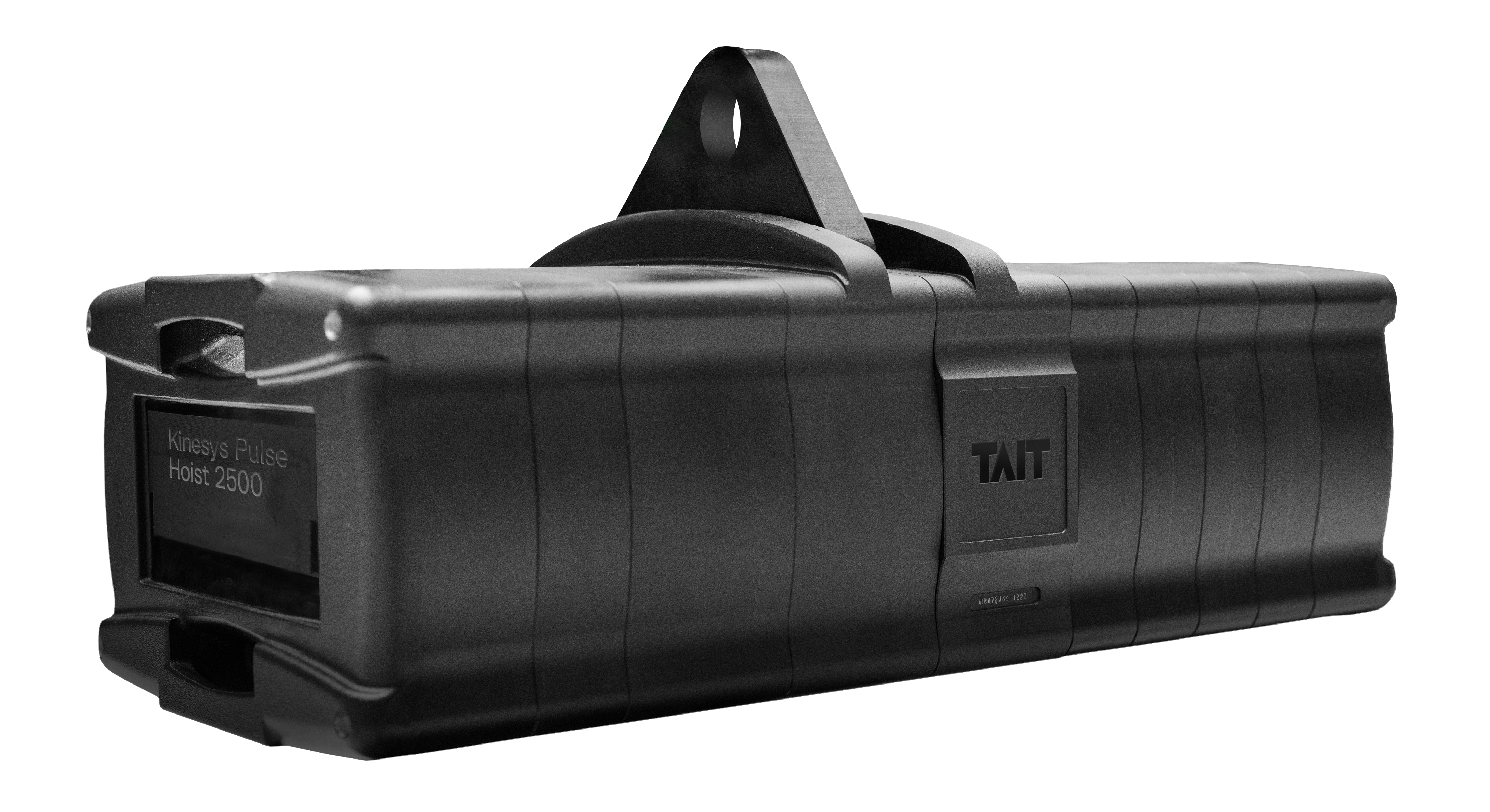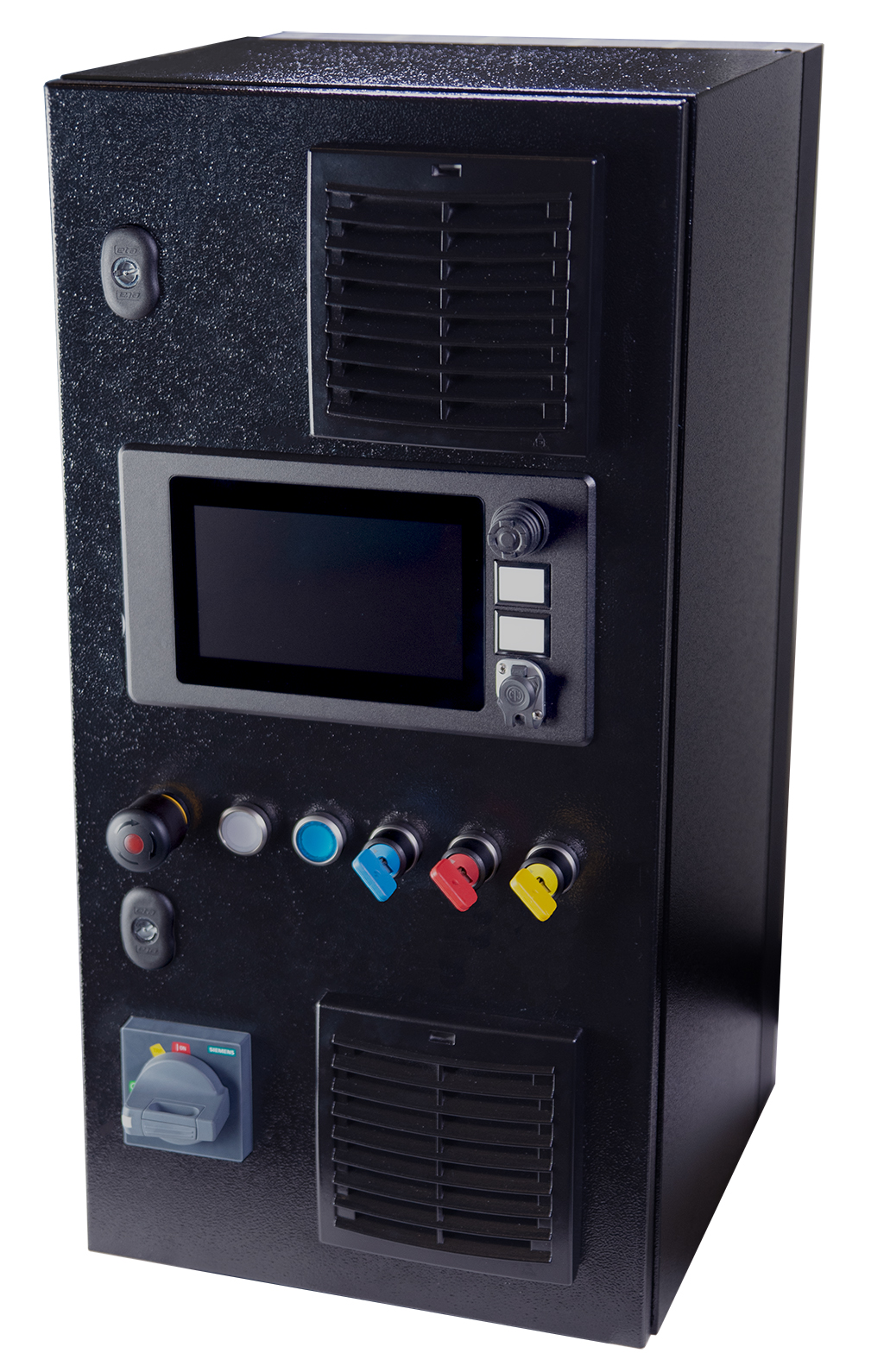Elevation to Apex: an evolution
The Elevation system has been at the heart of the Kinesys product range for two decades and has played a significant role in the growth of variable speed chain hoists, particularly in the concert touring market. Times change though and industry demands have moved on, as have the standards governing risk assessment and the use of hoists in show environments, such as BS EN 17206.
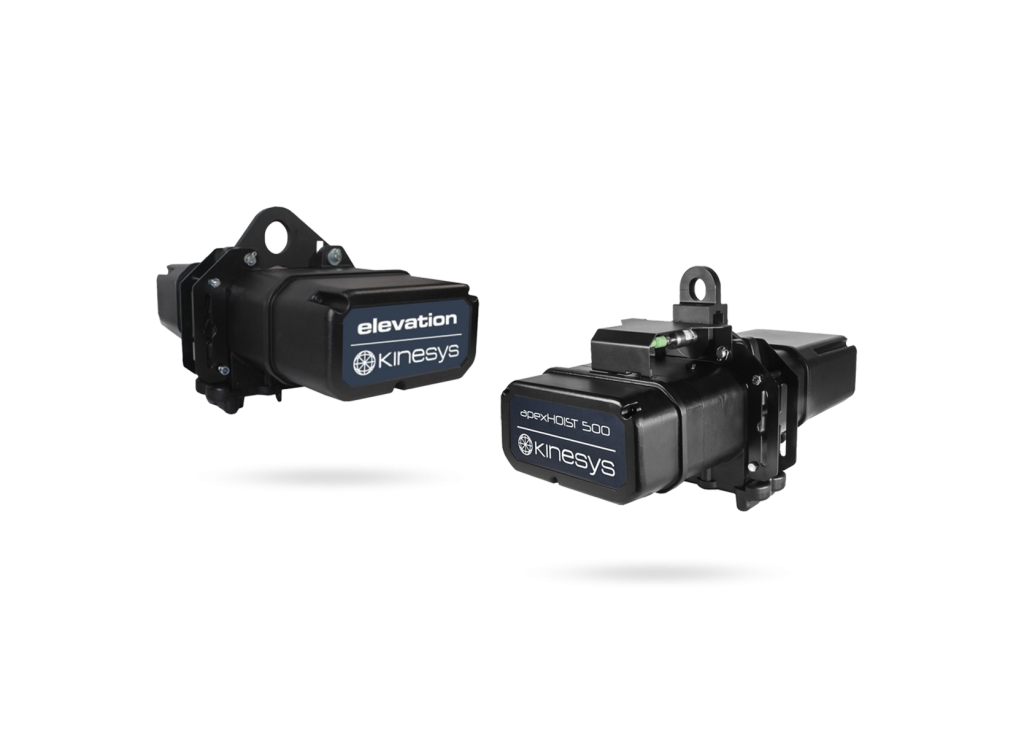
Because of these changes, we created a new product that combines the strengths of Elevation with the latest, most cutting-edge technology. We’ve built a best-in-class system that meets or exceeds the most stringent safety requirements in the world—standards that will soon become even more widespread.
In creating Apex, we looked at what users liked about Elevation and combined that with feature requests from designers, customers and operators. Armed with this insight, we created a system that meets the highest safety standards while still being easy to use, flexible and modular—just some of the things our customers have always loved about the Elevation system.
Apex versus Elevation
On the surface, the two systems work in similar ways:
- They both use a hoist combined with a separate controller, allowing hoists with different lifting capacities and speeds to be used with the same controller for different applications.
- This means they offer the flexibility for future expansion as new hoists and machines are developed.
- Both systems allow power and data to be daisy-chained through the controllers to minimise cabling.
Both use readily available and touring-friendly connectors and cables. However, beneath the surface, there are some fundamental differences:
- The Apex system uses minimum 8:1 safety factor hoists, allowing for use in every rigging and show situation.
- Apex has dual encoders and a built-in loadcell as standard, as well as several unique features to allow for extended running in show situations.
The Apex system also meets the requirements of SIL3, which means that its positioning, load-sensing and braking systems meet the highest safety standards defined by current regulations.
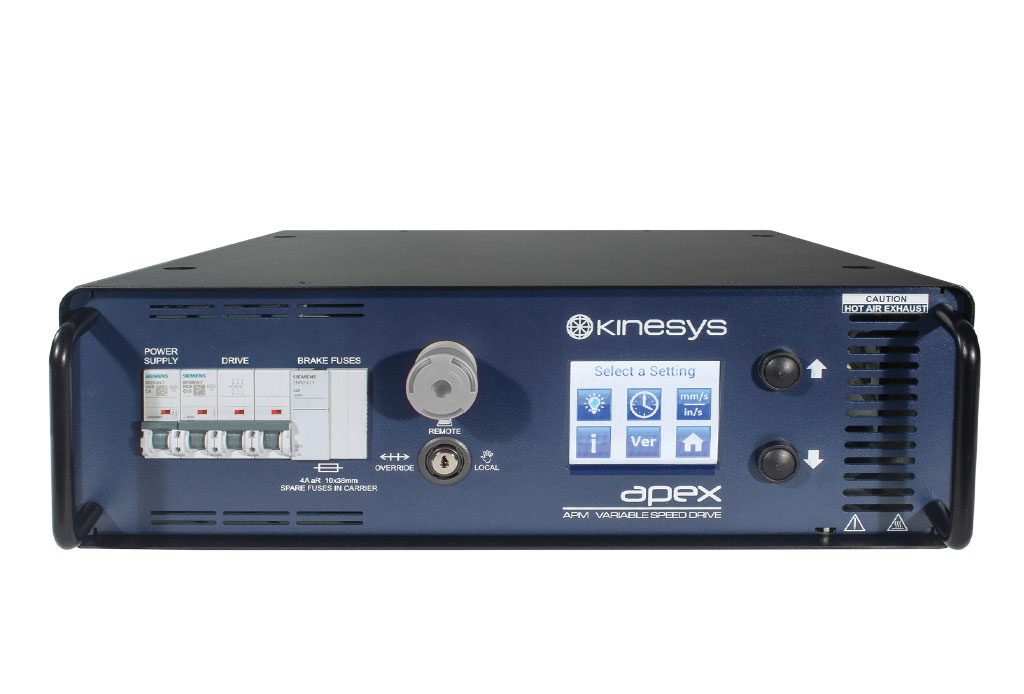
What is SIL3?
There are five levels, from 0 to 4, with the number increasing as the level of safety and redundancy increases. SIL4 is generally only required in industries where a failure in the safety systems could result in a catastrophic outcome. Examples of SIL4 sectors are aviation, rail and nuclear power.
Assessing the SIL level required for a project is a complicated process that involves risk-assessing every element of scenic or performer movement and applying a formula based on frequency and duration of use and failure risk to find the correct SIL level. Once you have a SIL number for each aspect of movement, you can select a safety device with a SIL rating equal to or higher to counter the chance of a failure occurring.
Here’s an example:
A video wall is flown on five hoists in one line. The video wall is moving at speed, and people will be walking beneath it as it moves, so the Hazard and Risk Assessment (HARA) process indicates that SIL3 is required.
There are two approaches to managing this risk:
1. Ensure the position of the hoists is monitored by a SIL3 system and confirm that the software sends the same destination, speed and ramps to each of the five hoists every time the wall needs to move. Additionally, the software must ensure the hoists stay synchronised with one another at all times. Given this functionality is fundamental to the safety of the hoists’ operation, the software must also be SIL3 validated.
2. An alternative approach would be to use load monitoring on each hoist. The hoist would need to have defined underload and overload values entered during commissioning that would sense the weight change at each point. If a hoist reported an out-of-range weight, the group would shut down to prevent potential damage. This would require a SIL3 load monitoring system alongside a SIL3 level mechanism to shut down the hoist group.

Elevation and Apex: the perfect match?
We often get asked if you can use Elevation and Apex on the same show. The answer is an emphatic yes, but we don’t recommend combining different hoist types and capacities on the same object. That said, there’s nothing to stop you from using Elevation and Apex systems on various elements of the same show. The Mentor range of safety controllers allows different technologies to be combined and controlled from a common set of emergency stop mushrooms and enable buttons (also known as dead man’s handles).
Kinesys Vector and K2 software can be upgraded to access the new communication protocols that support both Apex and Elevation drives (for free); the software installers also include the latest personality libraries for all of our latest hoists, including Apex. Once that’s done, you can use the following hoists, which are programmed and operated in the same way as the Elevation system:
- Apex Hoist 1250
- Apex Hoist 500
- Apex Hoist 500 Servo
Additional supporting software allows users to configure Apex’s SIL3 safety systems to deliver maximum benefit and safety during commissioning.
Ongoing Support
It’s important to note that Apex doesn’t make Elevation redundant. We’ll continue to sell Elevation systems and support the thousands of units already in use worldwide every day.
The capabilities of the Elevation system mean it can still be used in many applications and territories worldwide. Local scenic flying standards and regulations vary from region to region, depending on where the equipment is used and the application type.
Risk assessment can determine the suitability of equipment for an application, but the latest safety standards make risk assessment a requirement rather than being best practice.
For more information and to view our latest technical document, click here

